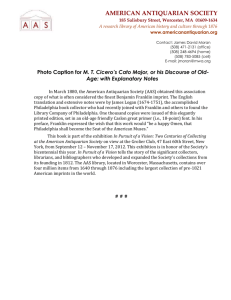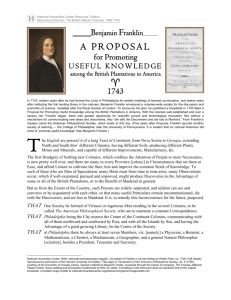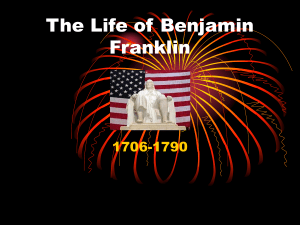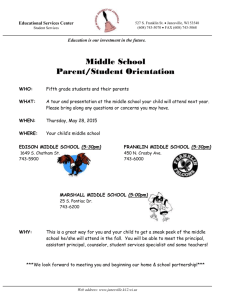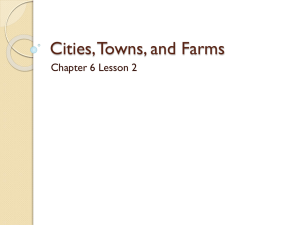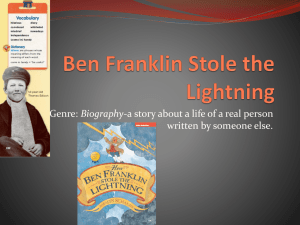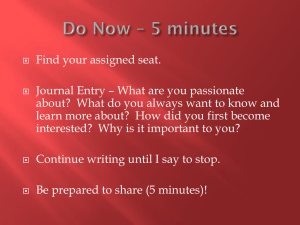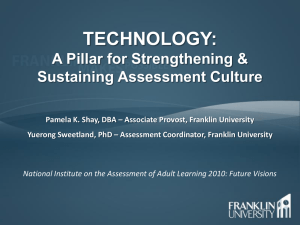docx - Roy Lisker`s Ferment Magazine
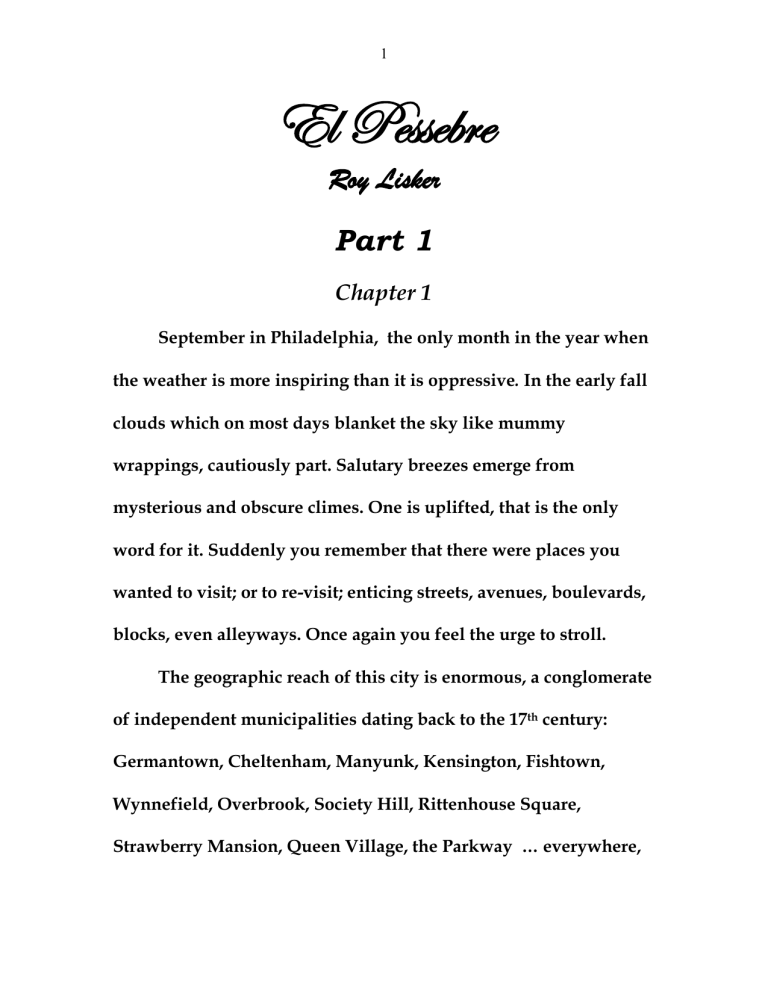
1
El Pessebre
Roy Lisker
Part 1
Chapter 1
September in Philadelphia, the only month in the year when the weather is more inspiring than it is oppressive. In the early fall clouds which on most days blanket the sky like mummy wrappings, cautiously part. Salutary breezes emerge from mysterious and obscure climes. One is uplifted, that is the only word for it. Suddenly you remember that there were places you wanted to visit; or to re-visit; enticing streets, avenues, boulevards, blocks, even alleyways. Once again you feel the urge to stroll.
The geographic reach of this city is enormous, a conglomerate of independent municipalities dating back to the 17 th century:
Germantown, Cheltenham, Manyunk, Kensington, Fishtown,
Wynnefield, Overbrook, Society Hill, Rittenhouse Square,
Strawberry Mansion, Queen Village, the Parkway … everywhere,
2 and in the most unlikely places, one uncovers bits of local history that reveal some hidden charm.
Indeed, Philadelphia is about as historic as one is likely to get in the United States. The Romans did not erect the bridges one sees over the Schuylkill River: yet, looking at them from a commuter train, with the Art Museum coming into view, it’s nice to imagine they did. One hears the horses hooves ringing again on the 17 th century cobblestones, the lost dynamism of revolutionary times
(during which this was probably the most exciting city on Earth) resounding in our ears like a distant echo. While across the streets and squares of the historic district flit the spectres of vanished literary greatness.
Above all, one wants to live! One is eager to take on new challenges, and one dearly wishes that this exceptional state of mind will last long enough to allow for the accumulation of the financial means to move to some less forlorn destination!
There are lovely parks still awaiting discovery; tree-lined streets; a breath-taking neo-classic Parkway; rows of well preserved and restored historic government buildings; handsome private
3 houses around Independence Square and Independence Hall.
There are still to be seen , at least in the imagination, certain historic figures, stately and stuffy, some enlightened, some ambitions for power, some keeping a shrewd eye on the bottom line, parading these streets, or in heated arguments, or reclining from the heat, or fleeing in terror from the Yellow Fever.
For tourists the city planners have provided an inexhaustible diversity of sights and spectacles: world class museums; the Franklin Institute and Museum of Natural History; modern concert halls; many colleges; 2 major universities; medical schools; markets and restaurants.
The month of September, unique in the yearly procession through the Zodiac, encourages heart and mind to embark on endless rambling, through once splendid neighborhoods lined with handsome row houses, although their current residents are reduced to destitution; to gaze at the glimmerings of light even in streets of dilapidated tenements and squalid slums. Or, if one so chooses, to dally indefinitely, absorbed in extended meditations in Fairmount Park, the Morris Arboretum or the Longwood
4
Gardens, or under the trees of the Parkway. It is a time for the writing of poetry, painting, composing music …
Music! Go no further. Upon this subject more than a few words written in idleness must be introduced . Philadelphia, once, in the 18 th century, the political capitol of the United States, in the 19t h century the literary, in the early 20 th century the cradle of the graphic arts, in the latter part of the 20 th century, music must surely be the city’s unique claim to cultural greatness. If
Philadelphia were a nation, , music would be, as in Germany and
Italy, its national art. To forewarn the reader, this novel is all about the uniquely Philadelphian passion for music.
Music is omnipresent in Philadelphic history from its origins. In their zeal to persuade the lion to lie down with the lamb, the early Quakers must certainly have availed themselves of music’s indisputable charms for the soothing of savage breasts.
At the same time, the kinds of music tolerated by the Quaker
Fathers must have been very restricted. It was part and parcel of the prevailing climate of the 17 th century – whether in Calvinist
England, Puritan New England or Quaker Pennsylvania – to
5 excoriate music as a hellish intoxicant spawned of the devil. All spectacles, including masques, plays, or concerts were derided, when not banned altogether, as ungodly distractions from the grim business of founding the New Jerusalem.
A century later , and we are on firmer ground with Benjamin
Franklin. Despite living in the age of Blake, Ben was a genius with the vision of a shop-keeper. His was a nature both pedestrian and promiscuous, of tastes both mercenary and parsimonious, an inventor of extraordinary ingenuity who never let his competitors get the better of him.
In 1941 a string quartet was discovered among the casual byblows of this gifted and disordered mind. It is an early example of
American avant-garde experimental music; the lineage of transmission from Franklin to John Cage is unbroken and direct.
Thematically the string quartet owes more to the combinatorics of
Pascal’s triangle than it does to Haydn. Its counterpoint may not exactly be species but it is undeniably specious. In the perennial war between form and content, form emerges as the uncontested winner.
6
The classical paradigm of the string quartet stipulates the presence of 4 musicians, each of them playing one string instrument; at least one at a time. There is a standard distribution
(altered on occasion) of chordophones: 2 violins, viola and cello.
Paganini replaces one of the violins with a guitar; Boccherini could never have enough cellos to please him; but these are rare exceptions. Anything made by Franklin would have to be exceptional, and its discoverers in 1941 were a little miffed, but not surprised, when they realized that it is scored for 3 violins and 1 cello!
Ben was less than a novice when it came to the art of music.
Unschooled in composition yet strong in experimental science, he approached musical composition as a scientific experiment.
Emboldened by his own motto of “Waste not, want not” Benjamin
Franklin wrote down (separated by bar-lines) all possible combinations of the 4 open strings on all 4 instruments.
7
Ecriture a degré zero! His quartet never gets beyond this initial phase: from bar 1 to finis Franklin’s quartet is scored for open strings. It is the epitome of the through-composed piece.
One surmises that Franklin must have been too tangled up with
30 other projects to ever return to his experiments in quartet writing. Had he done so, we might now be the lucky inheritors of quartets for the first fingers on the E string, then on the A string, then the second finger, etc., to be followed up with combinations of different fingers on different strings on different instruments, permuted to all possibilities! By opus 1000, Franklin might well have come up with something electrifying, if not exactly edifying.
Yet Benjamin Franklin did, in the end, make an important contribution to the history of music through his invention of the glass harmonica. It was this invention, more than anything else, that really lay the foundation for Philadelphia’s musical edifice, flourishing like a majestic tree to this very day. It is no small matter that Mozart himself wrote some pieces for glass harmonica.
8
In the last quarter of the 18 th century Philadelphians spent their free time gossiping on what new benighted schemes were hatching in the Franklin brain: Fire departments? Universities?
Public Libraries? Constitutions? Lightning rods? Stoves? Bifocals?
Almanacs? When they learned that somebody in Vienna with the odd name of Wolfgang Amadeus Mozart had written pieces for their own Ben Franklin’s glass harmonica, some of them may have even been inspired to learn more about his music!
Although his string quartet failed to captivate Mozart,
Franklin did succeed in attracting the attention of Mozart’s librettist, Lorenzo Da Ponte. Da Ponte, keeping one step ahead of his creditors, fled to Pennsylvania in 1805. After failing dismally as a grocer in Sudbury, he opened a school in downtown Philadelphia
( which Bronson Alcott, father of the redoubtable Louisa May, would shortly turn into a hotbed for early experiments in alternative education) . Da Ponte later opened another one in New
York City called The Gentleman’s Academy .
9
Success came his way when he was finally able to do what he did best. Junketing between the two cities, Da Ponte launched into a career as opera impresario, bringing over the cream of Italy’s miraculous corral of singers of bel canto ( including the great master himself, Manuel Garcia).
He died in 1838, but not before establishing the opera house in New York that would, through many and various transmutations, become the Metropolitan Opera. His activities also stimulated the ideas that led to the construction of Philadelphia’s
Academy of Music in 1855. Of which more presently.
Thus there has always been music in Philadelphia and there will always be music there. It is not altogether absurd to derive the presence of Efrem Zimbalist, Leopold Stokowski, the Academy of
Music, William Kincaid and Marcel Tabeteau, Vincent Persichetti and George Crumb, Samuel Barber, the Philadelphia Orchestra, a dozen good music schools, many instrument makers, a world class
Conservatory and much more besides, from the shrill acoustic envelopes spiraling away from the rims of Franklin’s wineglasses!
10
I leave the task of connecting his wineglasses to
Philadelphia’s subsequent musical development, to qualified historians, asking only that I be given credit in their footnotes.
